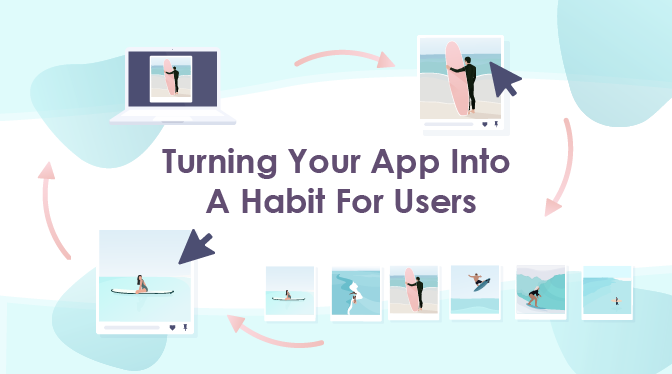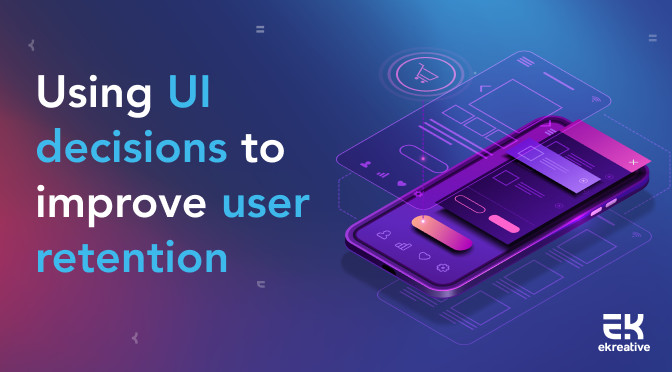
Why You Should Invest in Video Marketing ASAP
Posted on July 31st, 2020
This guest-post is courtesy of our partners at Performante.

This guest-post is courtesy of our partners at [Tapadoo](https://tapadoo.com/). The number of apps available on the app stores reached 5.5 billion in Q1 of this year. The competition among apps is high and the choice for users is wide. Assuming you’ve invested in [app store optimisation](https://www.gummicube.com), your app has climbed the app ranks and users are starting to download it, what next? The next metric you need to consider is retention rates. The graph below from Statista shows that current retention rates are at 32%. This means that for every 100 users who download and use your app, 32 of them will continue to do so after a certain timeframe. If you can manage to keep your app at a retention rate of 32% it is doing well. Many apps fall well below this threshold with 25% of users abandoning an app after the first use and 75% abandoning after 90 days. <Image src="https://res.cloudinary.com/gummicube/image/upload/v1708646155/upload/community/4208447538.png" width="1000" height="743" /> [Source](https://www.statista.com/statistics/751532/worldwide-application-user-retention-rate/) The Hook Model by Nir Eyal is a great tool to help your app stick in the mind of users. It was designed to create habit forming products. It’s a four step process that follows a particular sequence of Trigger, Action, Variable Reward and Investment. The Hook Model helps us to understand how digital products influence our behaviour. It explains why certain digital products become habits while others flop. Eyal developed the model by researching the psychology and technology behind the big social media giants of Facebook. Instagram and YouTube, gaming apps and WhatsApp. These companies are great at changing human behaviour that Eyal wanted to adopt their approach and make it available to all. Eyal says that if we used these exact same techniques we can create habits with our digital products. If you are looking to build a habit-forming product you need to understand the four stages of the Hook Model. As Eyal states, you can buy growth but you can’t buy engagement, you can’t buy consumer habits, you have to design that into your product. **The Hook Model Sequence** <Image src="https://res.cloudinary.com/gummicube/image/upload/v1708646155/upload/community/1113255498.jpg" width="3376" height="2855" /> [Source](https://tapadoo.com/) **Trigger** As Eyal states, the trigger is the activator of the behaviour - the spark plug in the engine. The trigger is a call to action. There are external and internal triggers. You need both to hook a person into the process or action. When a consumer sees an external trigger such as en email, social media post, app icon, push notification etc it must meet the internal emotion or internal trigger of the consumer. It’s this internal emotion that drives consumer behaviour. Whether you are designing your digital product from scratch or you have what Eyal refers to as ‘leakage’ with your product you need to be very clear on your consumers pain point. Their pain point is the emotion that you are trying to hook. Eyal says that when he works with companies to get started or those with an existing problem it’s always around consumers pain point. If you can’t get this right, then users are less inclined to take the action you desire. Pay attention to the problem you are solving for consumers. **Action** Following the tigger comes the action; the behaviour done in anticipation of the reward. Eyal says that action relies on two basic drivers of human behaviour; ease of performing an action and the psychological motivation to do so. The psychological motivation relates to the internal trigger; the users pain point. If you get this right then you satisfy the first driver of human behaviour. You also need to satisfy the other driver; ease of performing an action. This is where good user experience design comes in. If you make a task difficult for users to perform, no matter how much they have been triggered they will not perform that action. **Variable Reward** Variable rewards are one of the most powerful tools companies implement to hook users. The need for variability is because it creates a focused state which suppresses part of the brain associated with judgement and reason and activates the part of the brain associated with wanting and desire. **Investment** The investment phase increases the odds that the user will make another pass through the hook cycle in the future. Here you are asking the user to do a bit of work to invest in your product. This is another area that Eyal says can cause leakage in the cycle; when users aren’t asked to invest in the product. If they don’t invest in the product then you haven’t cemented the hook and users won’t be inclined to continue using the product. This is one reason why retention rates drop off. **The Hook Model in Action** <Image src="https://res.cloudinary.com/gummicube/image/upload/v1708646155/upload/community/3036560853.jpg" width="4657" height="3104" /> [Source](https://unsplash.com/@mrthetrain?utm_source=unsplash\&utm_medium=referral\&utm_content=creditCopyText) Fortnite is a good example of the Hook Model in action. As of May 2020 it had 350 million users worldwide and the mobile version of Fortnite crossed $1 billion in lifetime player spending on the App Store and Play Store, in just over two year after its release. Average revenue per download for Fortune is approximately $7.70. Fortnite has definitely hooked its users. This is how the Hook model plays out in their user cycle. As always, it starts with the trigger. We need both the external and internal trigger. The external trigger can be an invite from a friend who is already playing the game or a social media posting. Internal triggers are generally based on negative emotions, such as loneliness and boredom. Fortnite satisfies both of these pain points by offering them a thrilling game that will alleviate them of their boredom and help them connect socially with their peers. The game is also easy to use, which makes the action easy. As both of the basic human drivers are met it’s easy for users to take action. Fortnite has done a great job of the variable reward. There’s so much variability and unpredictability in the game. Users get excited about who their player will be, the terrain they’ll play on and what they’ll find. Not only has Fortnite satisfied the emotional needs of its players, they are now tapping into the brains reward system. By winning a fight or getting a Victory Royale there’s an increase of the feel-good hormone dopamine, which makes the user feel great. If something makes you feel so good then you want to do it again. Habits are formed by taking action. The action then creates a memory. If the memory is good this creates a desire. The desire then enforces the action to be taken again. Once this pattern is undertaken a number of times it becomes a habit. Every time you walk by a Starbucks you instantly get a taste of your favourite coffee and before you know it you are at the top of the queue placing an order. The final part of the Hook Model is the investment. It’s another part of the model that causes leakage; when users aren’t asked to invest in the product. If users invest in the product they will most likely go through the cycle again. Every time a user goes through the cycle a habit is formed. Investment in Fortnite comes with players being able to personalise their Avatar by upgrading their outfits and gear. Not all digital products will have this level of intense desire but if you can identify and speak directly to your users paint point you have made the right start. You are identifying the real world problem, then it’s a matter of bringing a good user experience designer on board to do the rest

This guest-post is courtesy of our partners at Performante.

This guest-post is courtesy of our partners at eKreative.

This guest-post is courtesy of our partners at Udonis.